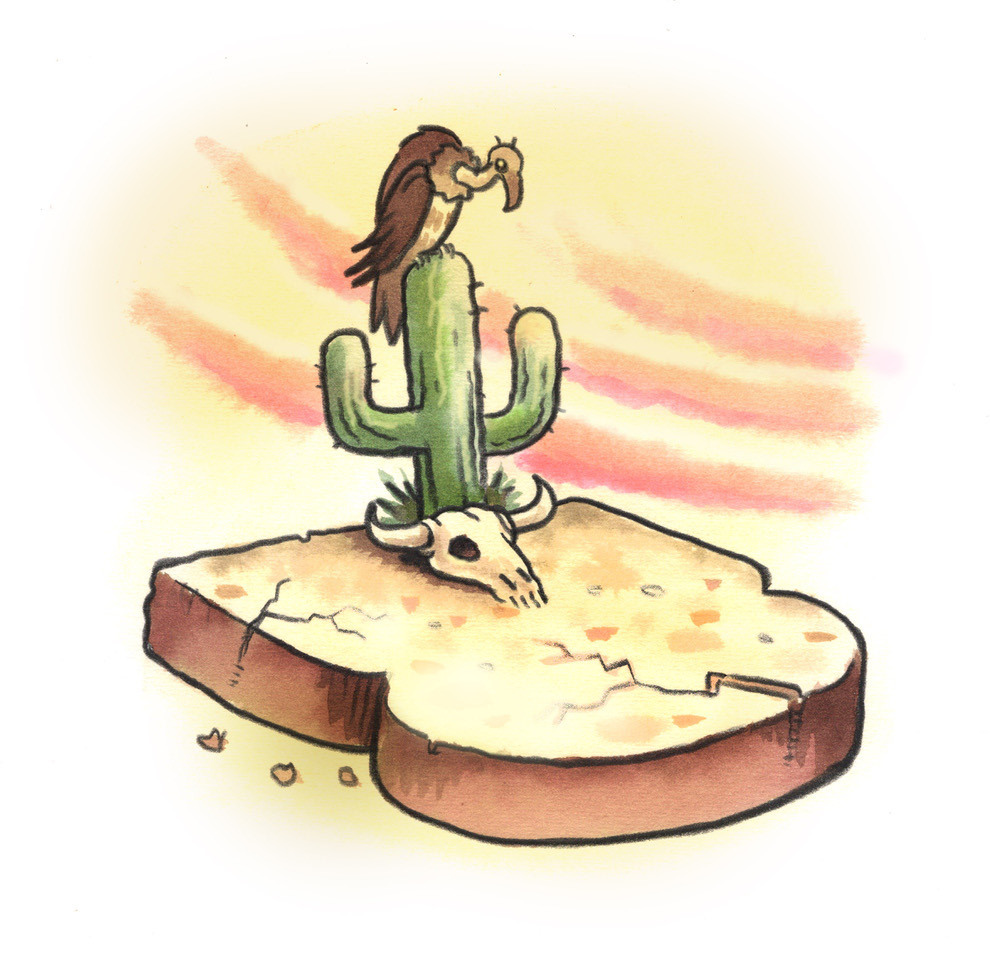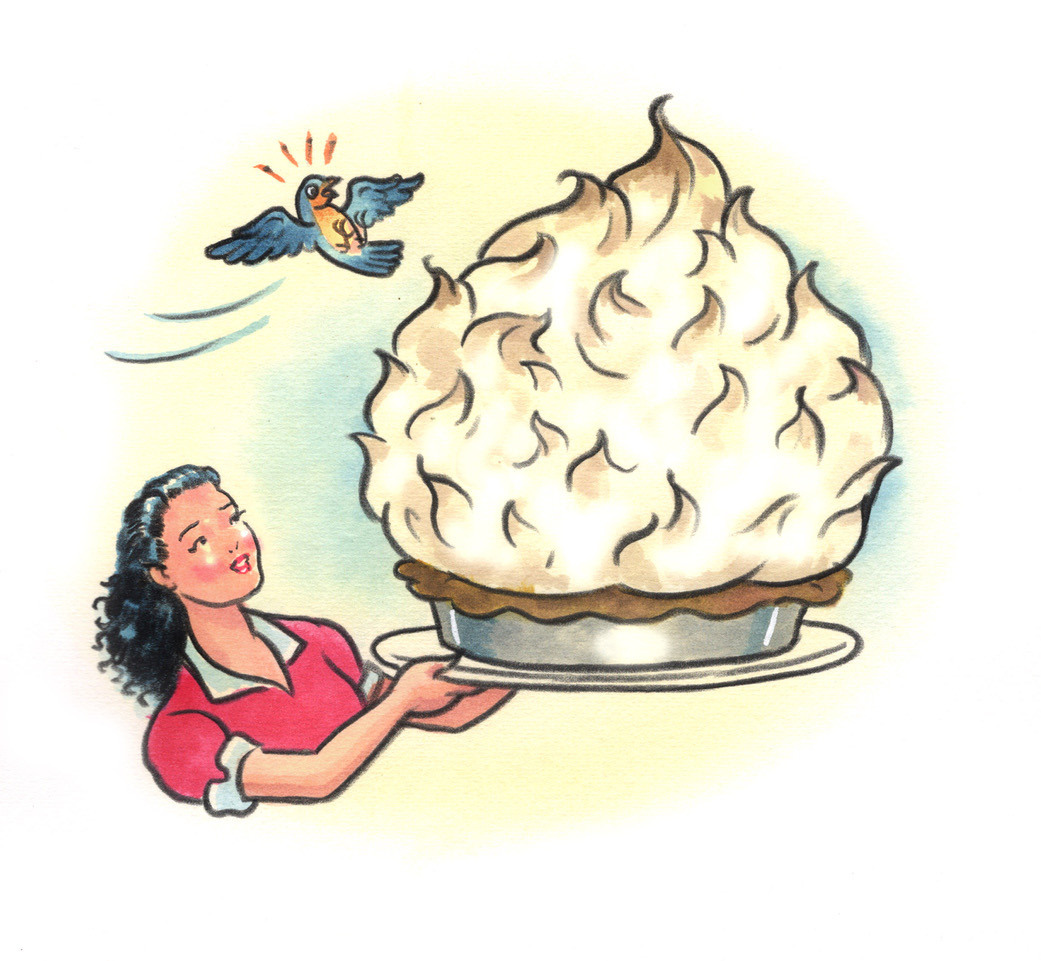
Stave Off Stale Bread
Frustrated by the short shelf life of pain de mie (a style of white bread), Matt Keller, of Washington, D.C., wondered why his loaves turn stale within a day and how to keep them fresh longer.
Bread gets its soft, spongy texture from the starch in wheat flour. The starch contains amylose molecules that absorb liquid when mixed as dough; the starch then gelatinizes when heated. These hydrated molecules are flexible, creating soft, tender bread. Over time, bread turns stale because the amylose molecules pack together into hard, brittle crystalline structures. Certain varieties of bread are more prone to this than others. Overall, white breads stale faster because whole-grain flours contain fats and fibers that can interfere with the formation of the crystalline structures. And certain varieties of white bread (such as pain de mie) stale even more rapidly because they start out with less liquid than higher-hydration doughs (such as many sourdoughs); the extra liquid means amylose molecules have a greater opportunity to remain dispersed and hydrated. Meanwhile, store-bought bread typically lasts longer than homemade thanks to the addition of preservatives and a high sugar content, which holds moisture. So what can you do to keep a homemade loaf of pain de mie fresh? When stored at room temperature, no method we tried—no matter how tightly we wrapped our loaf—prevented the pain de mie from turning dry and crumbly. The best bet was freezing loaves while still fresh, then thawing at room temperature. But wait until ready to serve before slicing; loaves that were sliced before freezing didn’t fare as well.
The Secret to Juicy Chicken
Chicken breasts offer a quick and easy blank slate for getting dinner on the table fast. Unfortunately, they also easily overcook and dry out. Numerous callers have asked for best practices to keep chicken breasts tender and moist.
The trouble with chicken breasts—a white meat—is that they are quite lean. This lack of fat means they dry out quickly during cooking. By contrast, dark meat (thighs and drumsticks) holds moisture better and is more forgiving during cooking. The muscle tissue of dark meat also contains fat and nutrients that make it inherently more flavorful than white meat. To compensate for this difference, we prefer to poach our chicken breasts. Compared to the dry heat of the oven or even a skillet, simmering them in seasoned liquid prevents the meat from drying out. But just as important as cooking method is how they are cooled. During cooking, heat causes the muscle fibers in meat to contract, squeezing out moisture. As the meat cools, the fibers relax—an opportunity for it to reabsorb moisture and flavor. We tested this by poaching chicken breasts in two batches: The first cooled in the poaching liquid (which we seasoned with salt, spices and aromatics); the second batch was removed from the poaching liquid and cooled at room temperature. It made a huge difference. The chicken cooled in the liquid was far more moist and tender, and also better seasoned. The air-cooled chicken was drier and far less flavorful. So when chicken can be cooked and cooled ahead—then added to a recipe at the end—we suggest poaching the chicken and cooling it in the liquid for best results.

How to Manage Mile-High Meringue
After an encounter with a lofty “mile-high” meringue topping a custard pie, caller Julie Hough, of Fort Lauderdale, Florida, asked for tips to get her meringue to reach new heights.
To master meringue—and determine which is best for building a sky-high pie—it’s important to understand the difference between the three varieties: French, Swiss and Italian. French meringue blends white sugar into whipped egg whites, yielding a delicate, airy texture perfect for soufflés. Swiss meringue whisks egg whites and sugar over a water bath until reaching a precise temperature, resulting in a glossy mixture ideal for frostings or filling cake layers. Italian meringue is made by whipping hot sugar syrup with egg whites, forming a sturdy and smooth meringue. These are not to be confused with meringue powder (a substance typically made from dried egg whites, sugar and stabilizers), which often is used in place of fresh eggs to make royal icing and frostings (though when used to make actual meringue, we find it tends to deflate and weep). Our pick for building mile-high peaks is Italian meringue, the most stable variety we tested. This is because the hot sugar syrup effectively cooks the egg whites, ensuring that the proteins coagulate and bond more firmly while also trapping air, resulting in a stable foam structure that is easier to pile as high as you can handle.






